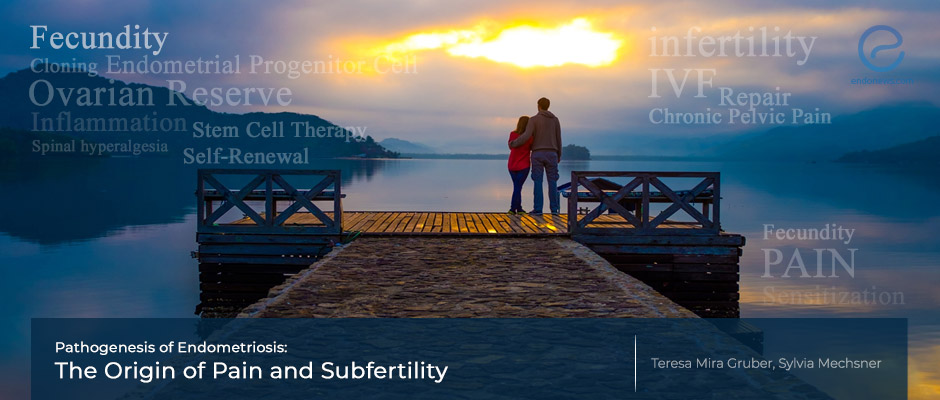The clues for pain and infertility in endometriosis/adenomyosis complex
Sep 7, 2021
Current knowledge on the pathophysiology of endometriosis and adenomyosis
Key Points
Highlights:
- There is increasing knowledge on the pathophysiology of endometriosis and adenomyosis associated pain and fertility problems.
- However both entities have not been completely understood for decades, and cause and effect link is missing resulting in clinical upset.
What’s done here:
- This is a comprehensive review on the pathophysiology of endometriosis and adenomyosis with an emphasis on pain and fertility.
Key results:
- Due to the complexity of the endometriosis and adenomyosis along with personal factors such as extent of the lesions and the desire for children, the patient population is extremely heterogeneous.
- Endometriosis and adenomyosis pathophisiology comprise "sensory" and "somatoform" pain mechanisms.
- When not diagnosed and treated properly, aggrevation of these mechanisms may lead to complex long-term problems.
- Chronic pain resulting in neuronal alterationsmay cause an endless loop connected with depressive disorders in other end.
- Furthermore, associated fertility problems, combined with sexual and behavioral changes decrease the quality of life.
- There is a challenge to conduct solid scientific studies to improve therapeutic options besides patient management is ahead.
Details of the review:
- Known facts concerning endometriosis and adenomyosis are summarized.
- Pathophysiologic origin of pain (specifically endometriosis associated pain) central sensitization and spinal hyperalgesia described in detail.
- Pathogenesis of endometriosis-associated infertility, including peritoneal lesions and endometrioma are outlined.
Lay Summary
Drs. Gruber and Mechsner from Charite University-Berlin, Germany published their comprehensive review on pathophysiological background of endometriosis and adenomyosis in the scientific periodical “Cells”.
Chronic pain and fertility problems are the main clinical issue in endometriosis and adenomyosis patients. In order to overcome these problems, it is of utmost important to understand the pathophysiologic basis of these lesions as well as their effect on the surrounding tissues. The treatment needs qualified clinicians since abdominal and gynecological surgery could be necessary in the clinical course of the disease.
The mutual existence of cyclic lower abdominal pain/dysmenorrhea and dyspareunia is frequent. In some patients, vegetative reactions such as nausea, vomiting, syncope, and cyclic menstrual-associated diarrhea could be seen.
Main pathophysiological basis seems to be centered on hormonal imbalance, stem cell activation, genetic and epigenetic changes, tissue injury and repair, epithelial-mesenchymaş transition besides fibroblast to myofibroblast transitions. Different pathologic routes and their interactions shape the clinical appearance in each patient. In consequence some patients’ complaints may focus on pain, pregnancy complications, subfertility annd even sterility. Risk of malignant transformation is also a well known fact in ovarian endometriomas.
There is a hot debate on adenomyosis causing fertility problems likeendometriosis. Sonographically and by MRI it is clear that more than 80% of all endometriosis patients have signs of adenomyosis, and in infertile endometriosis patients, even more than 91%.
endometriosis and adenomyosis causing pain and fertility problems are great concern among women worldwide. There is increasing scientific basis about the mechanistic pathways but both condiitions have not been completely resolved. Since the mechanisms are too complex with modifications due to personal factors such as complaints, age, the extent of involvement and the desire for fertility, the clinical appearnce is extremely heterogeneous. It should be our primary goal to conduct meaningful studies to improve therapy options and patient managements.
Research Source: https://pubmed.ncbi.nlm.nih.gov/34205040/
endometriosis; adenomyosis; pain; infertility; pathophysiology; inflammation; depression neuronal sensory somatic spinal hyperalgesia pain treshold central sensitization

